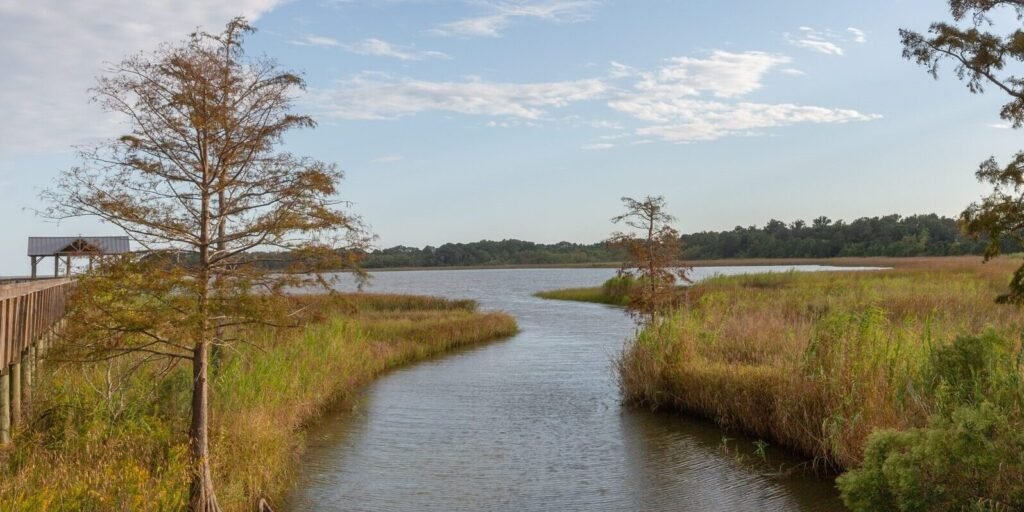Conservation Efforts in Alabama’s Coastal Regions
Alabama boasts some of the region’s most stunning waters. Residents enjoy amazing fresh seafood from the Gulf Coast and find plenty of opportunities to relax on beautiful beaches. However, there’s growing concern over what happens when these local treasures face threats. In light of this, we reach out to the Mobile Bay National Estuary Program for insights on ongoing coastal conservation projects.
As Kudulis highlights, coastal Alabama is grappling with significant changes to its landscapes. He emphasizes the delicate balance that needs to be maintained, especially in rapidly growing areas like Baldwin County. “Baldwin County has consistently been the fastest growing county in the state,” he notes, pointing out that this growth leads to increased pressure to transform natural spaces into concrete structures, resulting in heightened stormwater runoff issues.
Stormwater runoff is often underestimated in conservation discussions. Kudulis explains it simply: “Anything that falls from the sky and hits a surface that can’t recharge groundwater will create rainwater runoff.” While this has always been a concern, recent extreme weather events have exacerbated the problem.
He cites a significant record-setting rainfall as a critical example. “It was a 500-year storm event, bringing 12 inches of rain in just 3-4 hours. With no proper drainage, the water accumulates, increasing both volume and speed,” he describes. This situation deteriorates water quality as contaminants, particularly sediments, are swept along by the runoff. “Sediments are the number one cause of water quality issues in the state,” he stresses, adding that this creates enduring environmental damage.
So, what does this mean for the local residents? “With every rain event, sediments can shift downstream, leading to riverbank erosion, fallen trees, and the loss of connectivity in floodplains and wetlands. This ultimately pushes ecosystems to the brink of collapse,” he warns.
The conservation challenges are evident to Kudulis and his team. They recognize that many areas are not functioning as they should, which has led to their inclusion in the state’s impaired waters list. In terms of solutions, they see two main paths. The first is the traditional gray infrastructure approach, which involves building deeper drainage ditches. However, from their perspective, this method seems more like a short-term fix since it simply redirects water without protecting the ecosystem. The second option is to implement nature-based solutions, utilizing green technology. For Kudulis, that means rethinking streams to follow natural designs and better manage stormwater.
The D’Olive basin restoration project, led by the Mobile Bay National Estuary Program, showcases this nature-based approach effectively. Kudulis shares, “We’ve been actively working at this fork for years, and it’s been remarkable.” He underscores that their strategy is focused not only on improving water quality but also enhancing the aesthetic appeal and health of riparian habitats.
Kudulis reflects on the community’s needs, explaining, “They wanted to address the underlying issues rather than just the symptoms.” By targeting upstream areas where erosion occurs, they aim to minimize negative downstream effects. “Identifying these hotspots is crucial because issues like headcuts can lead to cascading problems,” he notes, likening it to unraveling threads from a dress.
In terms of broader strategies, he highlights the D’Olive Watershed model as highly effective, gaining national recognition. Kudulis points out that actions taken throughout Alabama can significantly impact the cherished coastal environments. “Most of the pollution entering Mobile Bay originates from higher ground. It’s vital to consider how decisions made statewide affect local waters,” he advises.
Ultimately, preserving the beauty of Alabama’s natural resources is crucial for future generations. “When discussing land use and stormwater management, it’s important to recognize that these issues resonate across the state,” he emphasizes.
For those interested in getting involved, more information can be found on the Mobile Bay National Estuary Program’s website.







